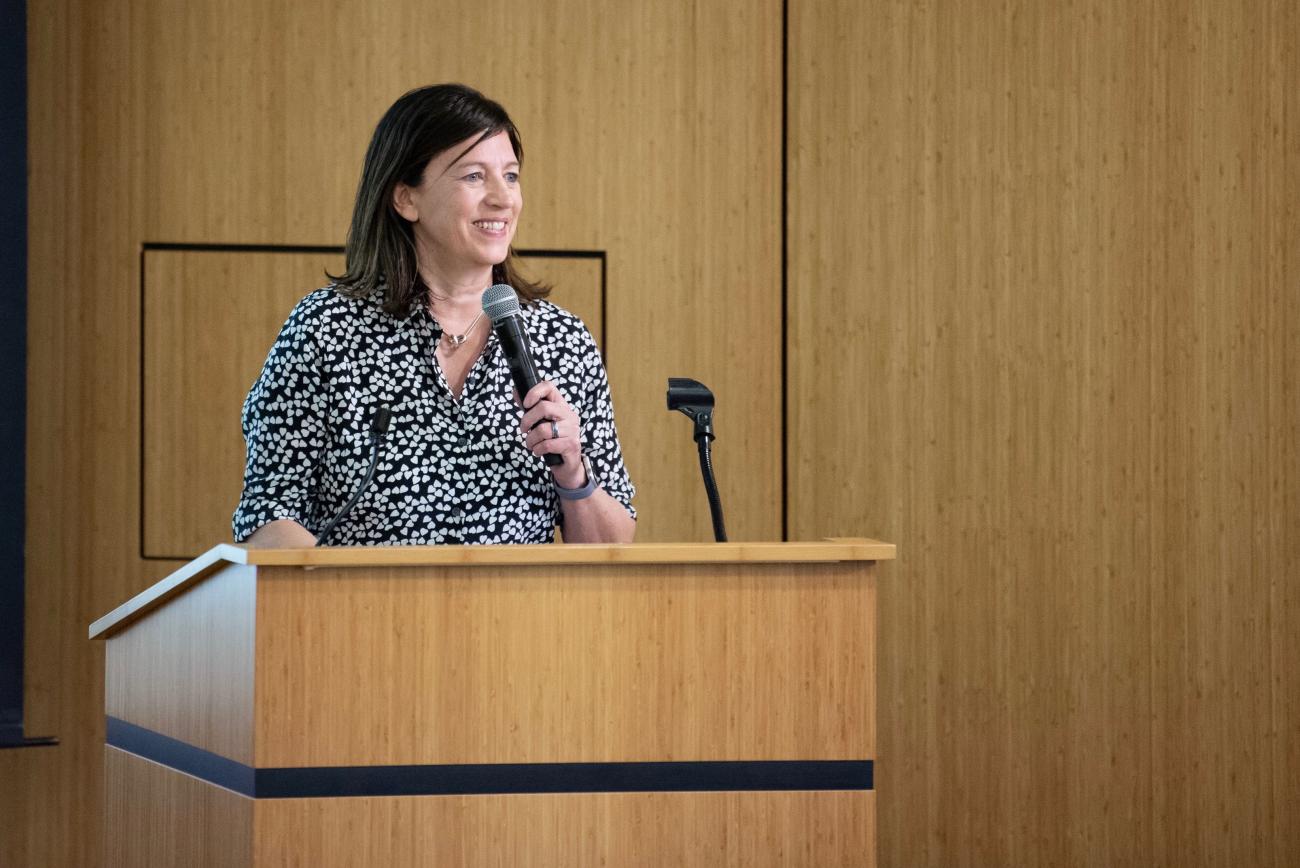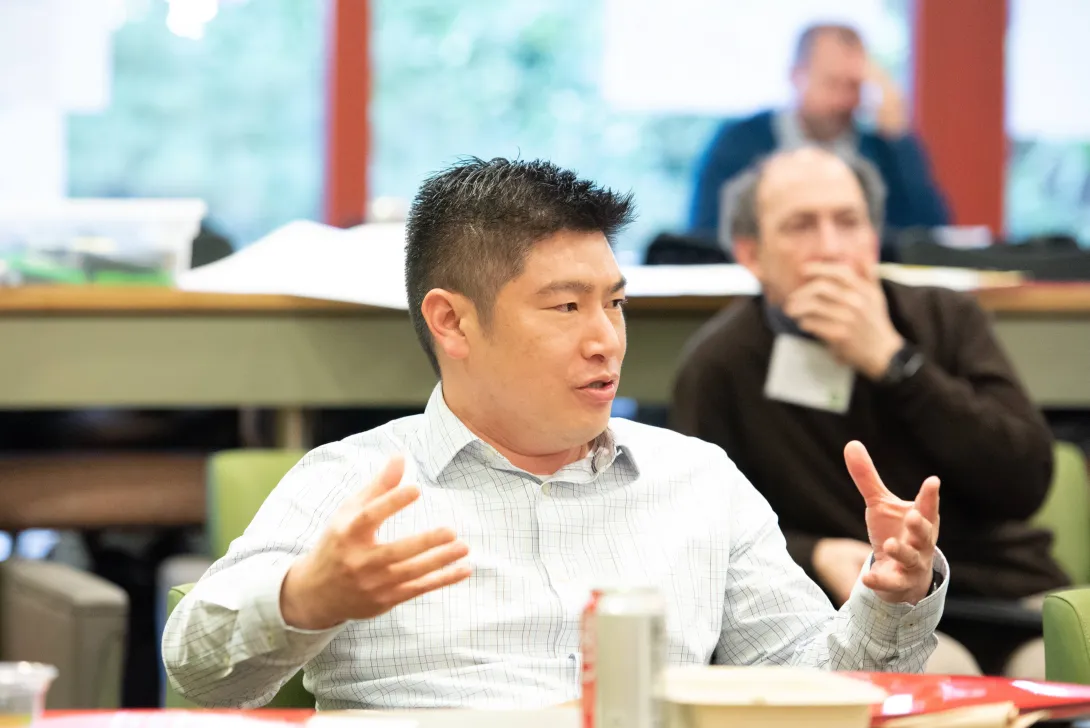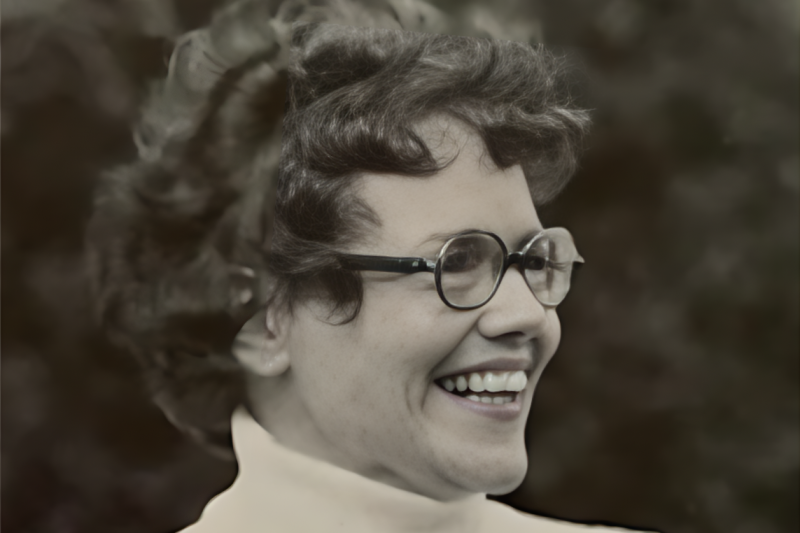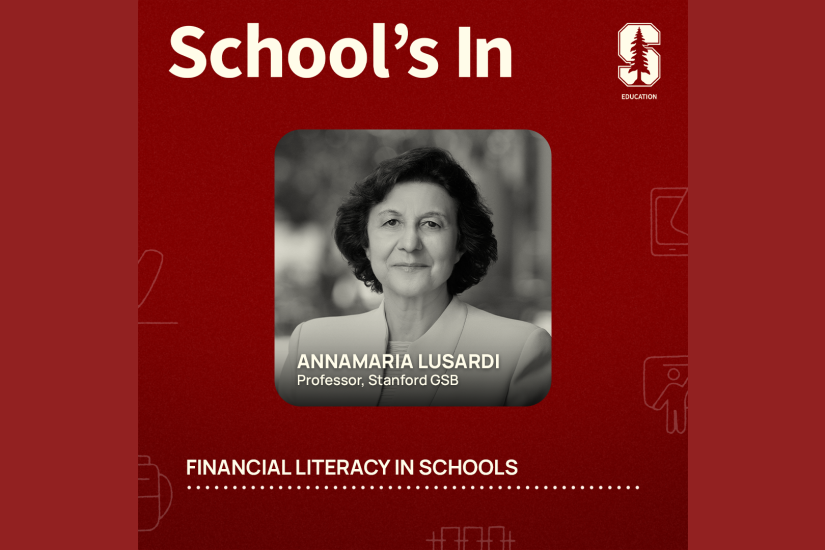"This really seems to have the potential to change [mathematics] in school — from a very procedural, meaningless subject for most kids into something they can see is useful in the world."

Bringing math class into the data age
Life in the 21st century is defined by data, tracking everything from our shopping and exercise habits to the spread of disease and the impact of climate change. Some educators are asking how schools can prepare young people to make sense of it all: Should data science become as much a part of the K-12 mathematics curriculum as geometry, algebra and calculus?
Intent on elevating data science to a more prominent place in K-12 education, a group of 50 mathematicians, data scientists, teachers and education policy leaders gathered for a daylong summit at Stanford Graduate School of Education (GSE) on Feb. 3.
Led by GSE professor Jo Boaler, the event brought participants together to strategize next steps for a burgeoning movement to modernize the K-12 math curriculum for the data age.
“The world has changed dramatically in recent years, but our mathematics curriculum has stayed the same,” said Boaler, the Nomellini and Olivier Professor of Education at Stanford and co-founder of youcubed.org, an organization providing resources for math learning. “We urgently need to teach kids what they’re actually going to use in their lives and their work. So we brought together the people we think can make this movement happen.”
‘An opportunity to reset’
The gathering grew out of an ongoing collaboration between Boaler and Steven Levitt, a professor of economics at the University of Chicago and co-author of the best-selling Freakonomics books, which apply data science to a variety of topics in contemporary culture. The pair recently co-authored an op-ed in the Los Angeles Times that called for putting data science at the center of high school mathematics.
Levitt, a father of four teenagers, became interested in the issue when he saw the mismatch between his own experience of mathematics and what his kids were learning. They came to see math as “voodoo,” said Levitt, who cofounded the nonprofit Center for Radical Innovation for Social Change (RISC) at the University of Chicago. “They were taught by teachers that these sets of things work, without any real understanding of why they’re doing what they’re doing.”
Data science, on the other hand, is “literally the expression of what is happening in the world,” he said. It lets students become “the discoverers of knowledge, as opposed to the recipients of the brilliance of past generations dumping knowledge upon them, with the hope that somehow it will stick.”
Boaler and Levitt convened the summit for participants to explore questions about the challenges of incorporating data science education into K-12 schools. Where could it fit into existing curriculum? What type of professional development would be most useful to prepare classroom teachers for this shift? How can schools ensure that students of all genders, race and economic background have equal access to the classes?
“When we think about computer science or math, the images that most people have in their heads are not of women, they’re not of people of color,” said participant Elena Grewal, PhD ’12, former head of data science at Airbnb. “This is an opportunity to reset. How can we ensure that everyone is included in this new field and feels like they can master these concepts?”
A more equitable pathway
Citing research demonstrating racial and socioeconomic disparities in access to advanced math courses in U.S. high schools, Boaler said that data science could offer a more equitable pathway.
“Calculus sits on this whole system of tracking and racial inequalities,” she said. “Calculus is the only AP class where you need to be advanced in middle school in order to get there.” When students are in sixth grade, it’s decided whether they should be able to go on to calculus, she said. “That is wrong on so many levels. Data science could be different, particularly if we go into this with our eyes open.”

Studying data science offers kids the chance to see how mathematical ideas “connect to their everyday lives and have consequences,” said Victor Lee, an associate professor of education at the GSE.
Working with real-world data could also be a way to draw students who might otherwise be disinterested or daunted by mathematics, participants said.
Studying data science offers kids the chance to see how mathematical ideas “connect to their everyday lives and have consequences,” said Victor Lee, an associate professor of education at the GSE, whose research includes studying ways to engage K-12 students in data analysis.
“Kids can look at their own daily activities using wearable activity trackers, examining what sorts of activities are making them more active or are more physically demanding. They can look at air quality sensors and see the quality of the air in their neighborhood. They can look at food and nutrition to see what sorts of resources are made available to some communities and less so for others.”
Outdated standards
Linda Darling-Hammond, president of the California Board of Education and a professor emerita at the GSE, noted at the summit that the current high school math sequence goes back to 1892, when a group of educators known as the Committee of Ten recommended a standardized curriculum for American schools.
“It’s a fairly antiquated approach to teaching,” said Darling-Hammond, who recently appointed Boaler and GSE assistant professor Jennifer Langer-Osuna to a state committee working to revise California’s K-12 mathematics framework.
One complication in changing the K-12 math curriculum is the perception that students who don’t follow the traditional pathway will be at a disadvantage in applying to colleges. In California, high school students need to complete a sequence of courses known as the A-G requirements, which include algebra II and geometry, to be admitted to a University of California or California State University campus after graduation. Colleges across the country similarly limit the high school math courses they recommend for successful applicants.
Boaler and Levitt are working with college administrators to broaden the scope of mathematics their institutions indicate they value. They are also pushing to expand the options available in high school for all students, including those who aspire to attend elite universities.
Preparing students for the data age
Beyond emphasizing the importance of preparing young people for a changing job market, participants at the summit spoke to schools’ duty to equip students for the demands of modern citizenship.
“It’s a bit like before literacy was common across most of the population—we had a small number of people at the top who could control everything else,” said Conrad Wolfram, co-founder of computerbasedmath.org. “We’re in a similar situation now with data literacy.”
As artificial intelligence becomes increasingly omnipresent, the need to understand how to work with data becomes more urgent, Wolfram added. “There’s a question of who’s in charge, the AI or the human,” he said. “We don’t want to compete with the machines we’ve made. We want to go to another level, and that’s got to change in our educational set-up.”
All photos: Sherry Tesler/Light FX Photography
Video: Stanford Video
Faculty mentioned in this article: Jo Boaler , Victor R. Lee , Jennifer Marie Langer-Osuna



